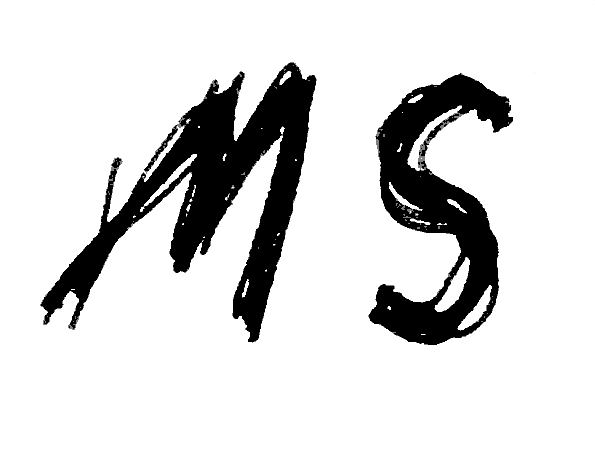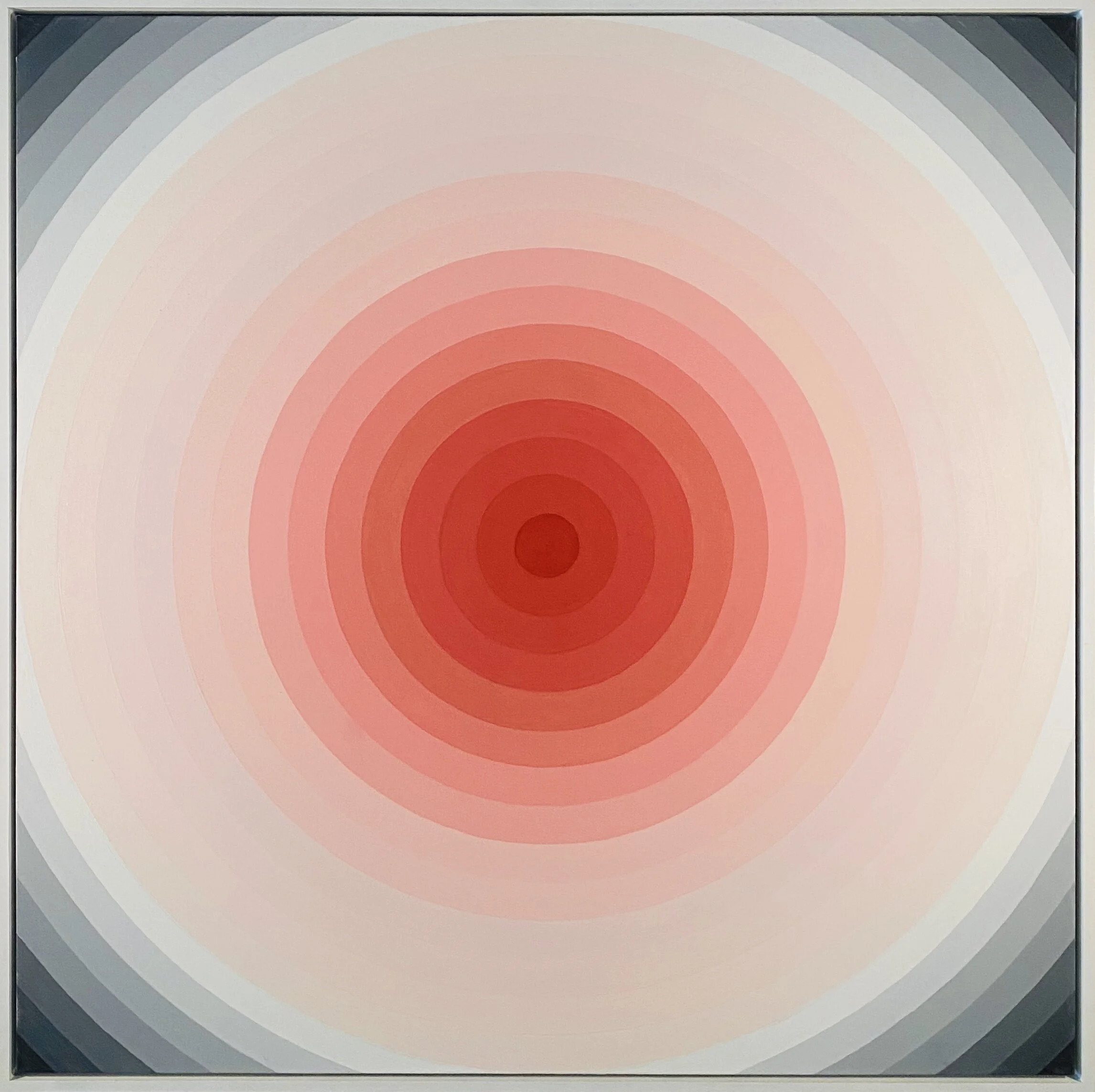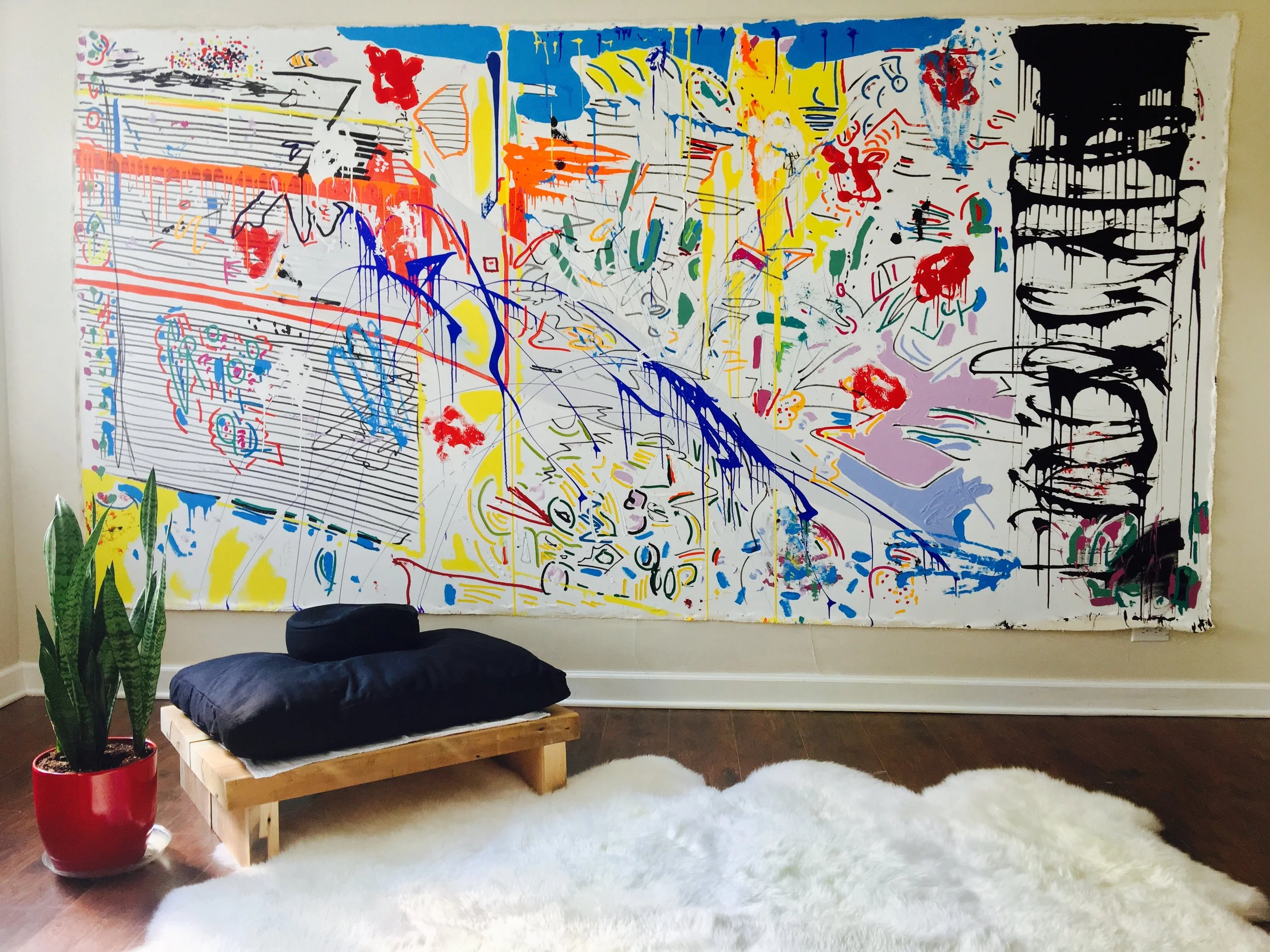Revisit
Why Revisit Something so Old?
I’ve kept this painting hidden for about 10 years. The few people who have seen it helped reaffirm my need to keep it hidden. I didn’t want to admit it because in the end all an artist really wants is recognition (be that in the form of kind words, a lingering viewer, a large check, etc). But recognition, in this case, would mean departure.
The few people with whom I shared the painting loved it about as much as I did - it’s one of my favorites - and I didn’t want to let it go. I’ve only felt this way about a few paintings, where moving on with some cash didn’t seem like the right decision.
But…
Now I’m ready to find it a new home, and for a funny reason: I need more wall space. Since COVID hit I’ve been painting non-stop and love what I’m working and need more room to hang paintings.
Sorry painting, I love you, but someone else will also love you.
(Read more about the painting below)
$1,500.00
Acrylic and paper on wood
Size of framed art: 26.25" x 26.25"
Size of canvas: 24" x 24"
The painting comes with a wooden float frame finished with a high-gloss, black enamel.
Some Background on this Painting (and how I feel about it now)
Paint under my fingernails. Broken fingernail. Chafed and lacerated skin. Sweat and dust on my forehead. The memories of making this painting are clearer than the brush strokes of some of my newer paintings. While laying and then destroying the painting’s surface (back in 2008) (more to come on “destroying”), I found a new lens and blinders (and a sense of calm from such a narrow focus) for my art-making, which had fallen into disarray some years prior because of the paralyzing force of too many choices. Up through grad school, I’d been a printmaker fully engrossed in etching and drypoint. At the conclusion of grad school, the print room vanished, like a bathotic (a word of my own creation: bathos + pathetic) plot twist where the protagonist, at the end of story, awakens from a dream.
The whole of my artistic career centered on the print room; printmaking is the print room. It isn’t like painting (and many other art forms) that can travel with the artist (think of Claude Monet standing in a field with his assortments of oils and canvases painting haystacks). Printmaking (at least the kind I did) requires a print room that usually contains: 1) large printing presses 2) nitric acid baths for etching 3) spray paint hoods for aquatint 4) storage for the many papers and plates an artist might have at one time 5) the list goes on and on. While I could have used the bathtub in my studio apartment for acid etching and my dining table for holding a minuscule printing press, I was rather fond of showering and having tea and shortbread in the mornings (yes, an artist must suffer, I know. But I’m particular about the type of suffering I’ll accept). Needless to say, no print room meant no printing. Almost over night I went from making art every day to peering through windows watching all the other artists etching their plates, sipping on champagne and throwing their head’s back to chuckle at each other’s wit (think Dan Akroyd in Trading Places). I was outside in the cold looking in. There I sat, with the knowledge of what I once was wondering how I might get it back (or did I even want it back?).
For a couple of years I was in limbo.
I loved printmaking (specifically drypoint) because of the physical process of digging into a zinc plate with steel tools. That tactile nature of the work complimented my need to feel what I’m doing - my need to move in order to feel (like) myself. So I thought, why not make painting a more physical practice? Not to say that it’s not physical (especially with some of my large paintings), but physical in a destructive way, like needing to remove stone from a block to reveal a sculpture or displace zinc on a plate to hold ink for a print. I needed to make art so I was willing to try anything and came up with a concept (to be explained) for my first painting.
Luckily I had some pressure to begin; I had been commissioned to create a painting (long story, not really worth sharing here.) and couldn’t really delay the process. The patron wanted a muted diptych (I unfortunately don’t have any pictures of the finished product), something that wouldn’t scream for attention, but would be a pleasant addition to the background of her office (I was essentially making a wall decoration, not art. The pay was good and I was poor). The basic idea was to splash layers of vibrant paint on the canvas, coat the whole painting with titanium white, and then hand sand the surface to reveal the colors underneath. I saw it like that that of a geological excavation of the lamina below the surface. I made a small initial example of the work (pictured below), cleared it with the patron and set out to create the larger scale work.
Long story short, the process of laying, covering and removing paint was satisfying. In many ways, the surface of the painting reminded me of that of a zinc plate after a heavy bout of drypoint - we had crevices, valleys, peaks like those on a model of the earth’s surface. Although I should point out that I was not interested in that three dimensional aspect of the painting when I first created it; I was only interested in the two dimensional, head on view of the painting. The surface of the painting only became interesting to me during the creation of the next painting, which we’ll discuss in just a moment. Before that, I’d like to comment that the patron who commissioned the diptych loved the final product, so success all around!
For the next painting (pictured below), I added the element of two different types of paper (I can’t remember what they were, but I think it was heavier brown paper and lighter gray newsprint) to the strata of paint. I intended to sand the surface heavily to reveal more of the colors and textures, so adding some diversity to the mix seemed appropriate.
While running my fingers over the whitened surface of the painting before sanding, I discovered that the paper had, in variously places, bubbled in the layers of paint, forming pockets of air (separation) between layers. While sanding, I could feel and hear the hollowness under the surface which I greedily excavated with with my fingertips.
More coming soon!









